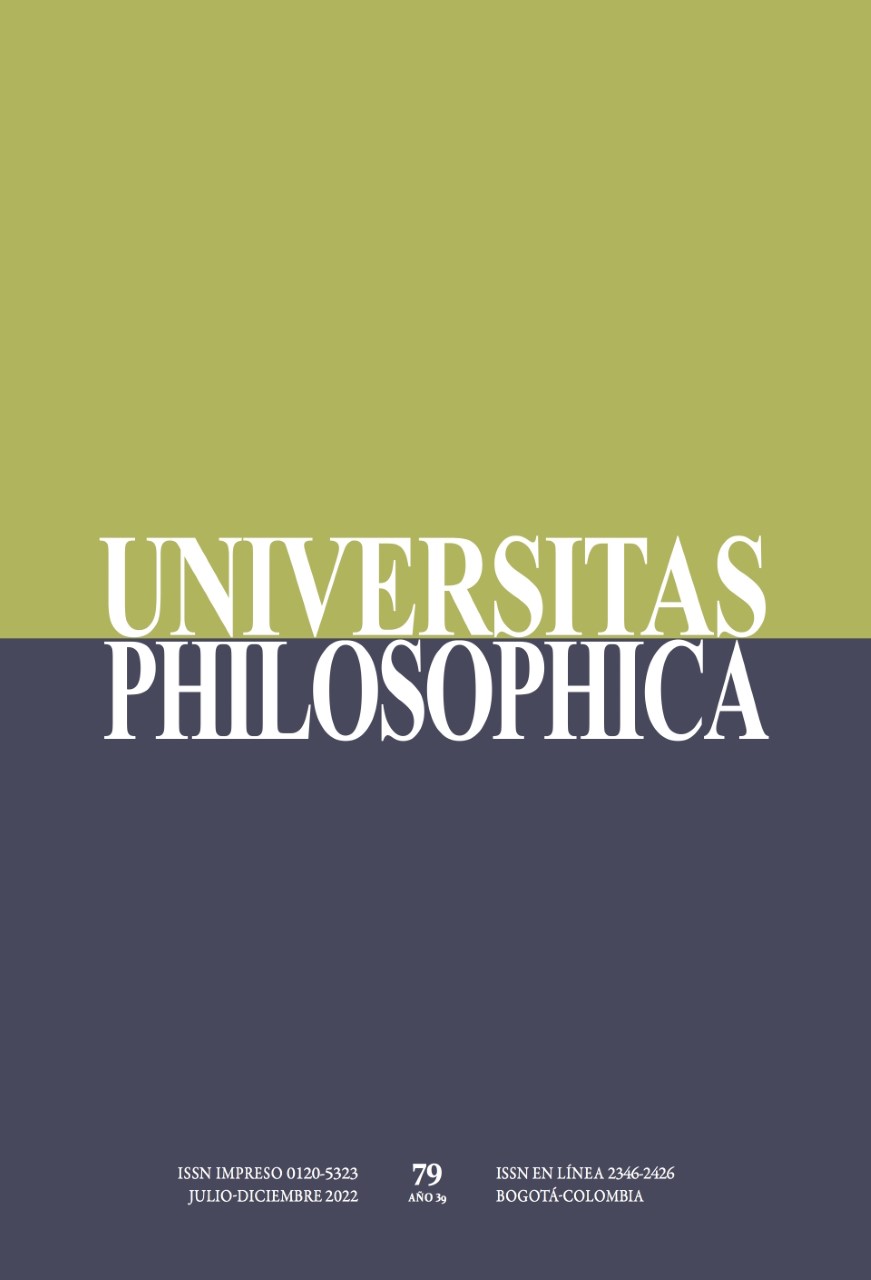Abstract
The so called existence of God seems to be a problem that insists in Western thought. Understanding such existence through categories that allow to objectify it, seems to rest on paradoxes that obstruct its consistency, in such a way that the insistence of this problem points to the presence of an excess. This excess will be considered as a trace of that which exceeds, without determining its form. This approach will be developed in the intersection of two discourses that address, each in its own way, the issue of the status of this type of trace: psychoanalysis and theology. This intersection operates through a common element, the body, seen as the location of an Other who is only known to us through the concavity of its absence. From this common place a space could be thought of in which the problem of God’s existence acquires a consistency appropriate to it, in accordance with the texture of its own “body”.
Allouch, J. (2016). Prisioneros del Gran Otro. La injerencia divina. El cuenco de plata.
André, S. (2002). ¿Qué quiere una mujer? Siglo XXI.
Aslan, R. (2014). El Zelote. Indicios.
Bataille, G. (1992). El erotismo. Taurus.
Caputo, J. (2001). On Religion. Routledge.
Chaumon, F. (2000). Le cri (D. Coral, Trad.). Essaim, Revue de Psychanalyse, 6, 55-75.
Chemama, R. (1996). Diccionario de psicoanálisis. Amorrortu.
De Castro, S. (2016). La proton pseudos histérica y la verdad del síntoma. Desde el Jardín de Freud, 16, 17-52.
De Certeau, M. (2004). La fábula mística. Siglos XVI-XVII. Universidad Iberoamericana.
Defoe, D. (2007). Robinson Crusoe. Oxford University Press.
Eckhart, M. (2013). Del desasimiento. En Meister Eckhart. Tratados y sermones (pp. 243-260). Las Cuarenta.
Freud, S. (1992). Introducción del narcisismo. En Obras completas (Vol. XIV; pp. 65-98). Amorrortu.
Freud, S. (1996). Proyecto de psicología. En Obras completas (Vol. I; pp. 323-389). Amorrortu.
Freud, S. (2001). Manuscrito K. En Obras completas (Vol. I; pp. 260-269). Amorrortu.
Freud, S. (2007). Estudios sobre la histeria. En Obras completas (Vol. II; pp. 1-260). Amorrortu.
Henry, M. (2001). Encarnación. Una filosofía de la carne. Sígueme.
Henry, M. (2004) Palabras de Cristo. Sígueme.
Kant, I. (2007). Crítica del juicio. Austral.
Küng, H. (2011). ¿Vida eterna? Trotta.
Lacan, J. (2001a). El estadio del espejo como formador de la function del yo tal como se nos revela en la experiencia psicoanalítica. En Escritos I (pp. 86-93). Siglo XXI.
Lacan , J. (2001b). La agresividad en psicoanálisis. En Escritos I (pp. 94-116). Siglo XXI .
Lacan, J. (2001c). Subversión del sujeto y dialéctica del deseo en el inconsciente freudiano. En Escritos II (pp. 773-806). Siglo XXI .
Lacan, J. (2003a). El seminario. Libro 5. Las formaciones del inconsciente (1957-1958). Paidós.
Lacan, J. (2003b). El Seminario. Libro 8. La transferencia (1960-1961). Paidós.
Laplanche, J. y Pontalis, J. B. (2004). Imaginario. En Diccionario de psicoanálisis. Paidós.
Piñero, A., Monserrat Torrents, J. y García Bazán, F. (Eds.). (1999). Evangelio Tomás. En Evangelios, hechos, cartas (Textos gnósticos. Biblioteca de Nag Hammadi II; pp. 53-97). Trotta.
Pommier, G. (1996). Nacimiento y renacimiento de la escritura. Nueva Visión.
Reichler, C. (1979). La diabolie: la séduction, la renardie, l’écriture. Les éditions de Minuit.
Schelling, F. W. J. (2005). Sistema del idealismo trascendental. Anthropos.
Silesius, A. (2005). El peregrino querúbico. Siruela.
Žižek, S. (2020). Sex and the Failed Absolute. Bloomsbury.

This work is licensed under a Creative Commons Attribution 4.0 International License.
Copyright (c) 2022 Camilo Salazar


